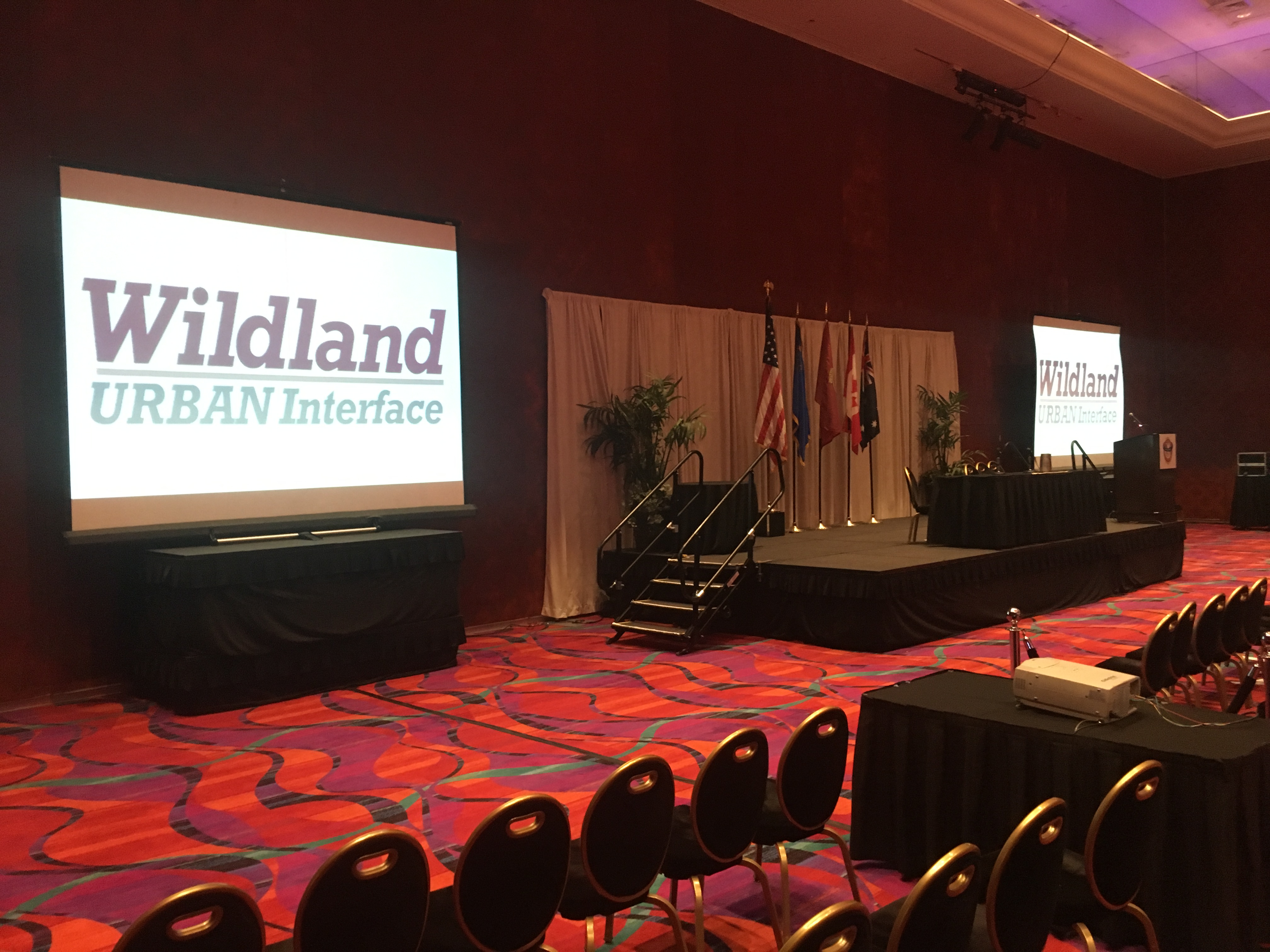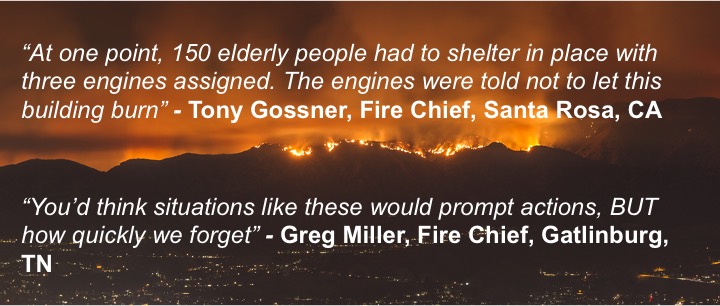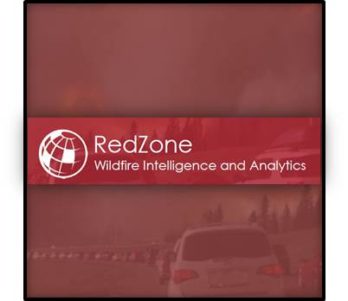Last week, a few of RedZone’s leaders attended the (Wildland Urban Interface) WUI Conference in Reno, NV. To kick it off, Pat Durland lead a featured course Sunday and Monday, teaching WUI mitigation techniques to a class of 40+ from all over the country. Pat prides himself on sharing the latest findings, lessons learned, and mitigation techniques each and every year. Mr. Durland touted the class as a success, citing a 40% increase in attendance from the previous year.

Wildfire Urban Interface Conference in Reno, NV
WUI Conference: Day 1
The rest of RedZone and nationwide attendees arrived as the conference began Tuesday and ran through Thursday afternoon. The full conference opened with a General Session on the state of Wildland Fire from a policy perspective. CALFIRE Chief Ken Pimlott, the IAFC Head, and USDA Forest Service (USFS) Deputy Chief, Vicki Christiansen, spoke during the session. The group highlighted the trends seen in terms of growth for wildfire activity and spending as well as the decline in both personnel and budgets. It turns out that 2017 was the costliest year in USFS history with the 2.4 billion spent on last year (up from 1.6 billion in 2016). Chief Christiansen also suggested that a year-round fire season is the expectation of leadership at the USFS. Consequently, she stated, “Wildfire consumes the USFS budget.” Fortunately, their strategy to overcome this relies on further development of a separate fund to pay for the outlier, 1-2% of, fires whose wildfire suppression costs cause the majority of the disparity. In turn, the fund should help alleviate the strain on the shortfalls for the non-fire forestry programs (a $100 million deficit on average annually). Sounds like tough times monetarily.
October 2017 Northern California Fire Siege
Day Two began with the highlight of the conference for me, a detailed report on the October 2017 Northern California Fire Siege. Our team spent nearly two weeks following and responding to one of the worst wildfire catastrophes in human history. I followed the Sonoma fires’ every move that eerie night, so it was interesting to hear from the Santa Rosa Incident Commander on his experience that night on the ground. These fires have been covered well so here are a few things I learned from Chief Tony Gossner (Santa Rosa City Fire, Tubbs IC for Santa Rosa City).
- On October 8th and 9th (2017) 172 different fires started, 21 of which went extended attack
- 3,600 911 calls were received
- Life Safety and Rescue were 100% priority for the first 12 hours
- Tubbs fire travelled 12 nautical miles in 3+ hours
- Learned a New term ‘mountain wave’, used to describe the wind pushing the fire down the mountain
- 78 strike teams were requested before midnight
- 150 elderly were left to shelter in place as evacuation of the facility became impossible, three engines were told “to not let this building burn”
- “Sounded like a war zone” (hundreds of cars and propane tanks blew up)
- There were more personnel than vehicles to respond, so firefighters used personal vehicles, rented vans, trucks, whatever they could get their hands on.
- “One group actually cut a lock and stole one of Santa Rosa City’s Fire Engines” (Chief Gossner)
- Alerting in the middle of the night was very ineffective
“One group actually cut a lock and stole one of Santa Rosa City’s Fire Engines” (Chief Gossner)
Other Seminars
We attended several other seminars during the next two days of the WUI conference. The next most relevant was an interesting discussion of the shortfalls of evacuation planning, terminology, and strategies for the different stages of an event. Lastly, Greg Miller, Chief of Gatlinburg fire then shared his department’s fight with the Chimney Tops 2 fire in late November of 2016. Similarly to the Tubbs fire, that fire devoured 2,501 structures in 8 hours due to another ‘mountain wave’ event. The deadly tale was yet another reminder that wind driven fires such as these are especially dangerous when they happen overnight.

Powerful quotes from Incident Commanders on two of the worst fire disasters in history




